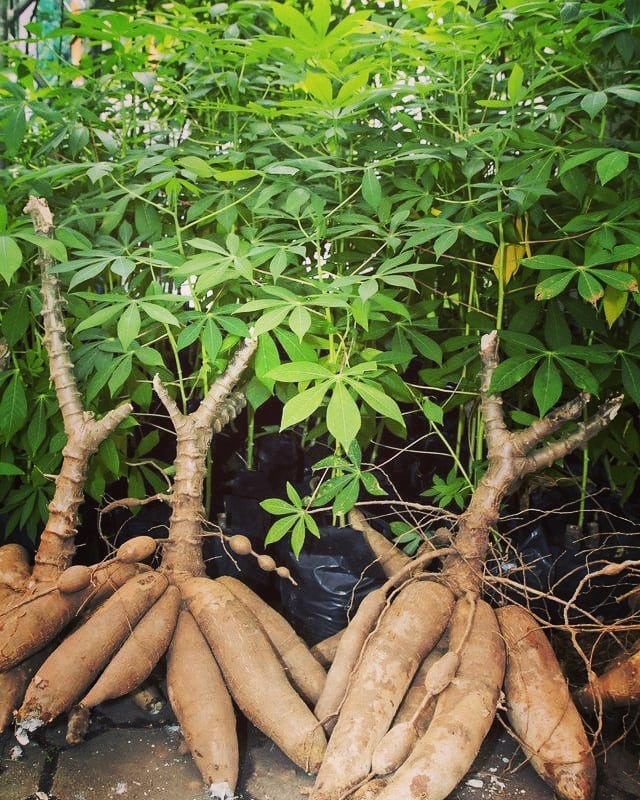Comfort food that sustained generations
If you ask any Keralite about his or her comfort food, the answer will be ‘Kappa Puzhukku’ or mashed tapioca tempered with local spices. It’s much like a North Indian’s answer of ‘Daal Chawal’ when asked about their respective comfort food. Comfort food has always been a sustainable dish that you can eat every day with the bare minimum effort in the kitchen, and something that feels like home. In the history of sustainable food in India, the root family of Cassava, Tapioca, or the more familiar Potato was always reliably present, come rain or shine.
What led to Kerala's strong attachment to tapioca? Why does Kerala consider it a sustainable dish? Come, let's investigate these questions in this article.

Kappa in history: A substitute that sustained
The Portuguese colonists first encountered Kappa or Tapioca in Brazil and found out how the indigenous tribes used tapioca in their daily cooking. Some historical sources say that the Portuguese colonists brought tapioca and potatoes to India with them during the 17th Century. However, under King Ayilyam Thirunal Rama Varma's reign in Kerala, tapioca began to gain recognition in the late 19th century. Vishakam Thirunal Rama Varma, the brother of King Ayilyam Thirunal Rama Varma, was a passionate botanist who studied substitutes for rice as a main diet. The terrible famine that the Travancore kingdom experienced in the late 19th century necessitated the development of a substitute crop for rice.

To counter the food scarcity faced by the people, tapioca samples were collected from Brazil and started to be grown around Kerala. The King ordered his royal chefs to prepare tapioca dishes and serve him so that his subjects could gain the confidence to try and adapt to this staple food instead of rice. As the tapioca samples arrived by ships or ‘kappal’ (in Malayalam), people started to call it Kappa.
Later, during the Second World War, when Burma failed to send a consistent rice supply to Kerala, Kappa became the game changer, providing not only an alternative staple to rice, but also maintaining the nutritional balance in the daily diet. Kappa needed very little water to grow, very little attention, and could be kept in the ground until needed. Almost all households started growing Kappa in their backyards back during those years.
It’s been a long journey now from the famine and food scarcity days, but Kerala still remembers the days of hardship and hence allots a specially high place to Tapioca.
Read more about the other sustainable dishes from Kerala: Rediscovering Kerala's forgotten culinary heritage.
More than just survival: The many faces of kappa
When the Keralites replaced rice with tapioca, they initially went for a preparation that appeared like rice when served along with the most common Kerala Red Fish Curry. So, the tapioca was chopped into small pieces, boiled, mashed, and tempered with coconut, mustard seeds, curry leaves, and shallots. The mashed and seasoned tapioca, locally called Kappa Vevichathu, when served, pretended the appearance like rice served in a bowl.
Different varieties of chutneys like Mulaku Chammanthi, Thenga Chammanthi, Onion and Chilli chutneys were served as accompaniments with Kappa Vevichathu. The spicy chutneys increased the flavor profile of the seasoned tapioca, making it into a wholesome, nutritious meal. Over the years, Kappa Vevichathu and Mulaku Chammanthi, or sometimes an added tangy red fish curry, became the most popular brunch meal for the Kerala farmers. The fortified nutrition from the tapioca and fish gave them the energy to toil hard for longer hours in the fields.

Kappa Vevichathu and Meen Curry: Mashed Tapioca with Kerala Red Fish Curry
Apart from Kappa Puzhukku or Kappa Vevichathu, there is a wide variety of dishes that are made from tapioca, and each of them stands out on its own with the simplicity of preparing them and their distinct tastes.
We believe Chenda Kappa to be the simplest dish made from tapioca, as it’s just chopped into cylindrical shapes representing drums or chenda and boiled in salted water. The boiled pieces of Chenda Kappa are eaten with hot and spicy Ulli Mulaku Chammanthi dip (Onion and Chilli Chutney).
In the past, industrious grandmothers of Kerala had thought of preserving tapioca by making into chips. These tapioca chips are locally called Kappa Varuthathu. Tapioca chips fried in coconut oil are relished by people of all ages as a teatime snack.
Stir-fried kappa with garlic, onion, and coconut (Kappa Ularthiyathu) acts as a dash of flavor changer alongside rice in the traditional Kerala lunch meals. Talking about flavor changer, we can never forget Kappa Biryani, in which tapioca and meat are cooked together. Any meat, be it beef, mutton, or chicken, when paired with tapioca, enhances the flavor of the dish and transcends into a delightful sensory experience. As kappa biryani is affordable and accessible to all, it serves as an equaliser.
Kappa: Kerala’s answer to food sustainability
King Ayilyam Thirunal’s brother, Vishakham Thirunal Rama Varma, looked for a crop that could grow during droughts, needed very little care, and could survive in poor soil. The tapioca samples which arrived from Brazil did fit all the requirements. He encouraged the people of Kerala to grow tapioca in their farms and backyards.
In no time, tapioca farming became common across Kerala. People discovered that a simple meal of boiled tapioca with local spices or kappa puzhukku with chilli chutney, local fish curry, kept them full for longer hours.
Tapioca was also cheap to grow. It didn’t need much water, fertilizers, or effort to plant and harvest. During the monsoon months, when there was food crisis, kappa became the saviour. It became an ideal crop for difficult times and helped Kerala move closer to food self-sufficiency.
All these conditions helped kappa to get recognition as a sustainable crop. It requires less water, grows well in poor soil, and fits well with current climate challenges.
With people now returning to gluten-free diets and traditional local foods, kappa continues to be a valuable part of Kerala’s food culture, providing health, sustainability, and tradition.
Kappa’s comeback: From survival menu to fine dining
Kappa had this typical working-class meal written all over it, as it was associated with times of food shortage. In the local toddy shops of the Kerala backwaters, a dish of Kappa Vevichathu with Kerala’s red fish curry is the most common dish to be found. When it comes to following zero food mileage, kappa, chammanthi, and meen curry are always the home favorites among local restaurants.

Kappa Biryani (P.C: yummytummyaarthi.com)
Kappa carries a profound story of food and cultural heritage, and hence, in present times, fine dining restaurants, dinner clubs, and 'Chef’s Table' events prefer to showcase a kappa meal as a tribute to Kerala’s culinary roots. Guests are made aware of the importance of kappa in Kerala cuisine and how they can replicate the same in their home kitchens. In these ways, the stories of kappa survive and stand the test of time.
Would you like to experience 'Chef's Table' at our kitchen? Book your slots now.
Advocating food sustainability starting with kappa
Food sustainability is not something new to Kerala or India at large. It started long ago, when people had to find smart ways to survive during hard times. With food sustainability, the practice of no food wastage is also followed, and the ingenious women who managed households brought up different ways to cook different parts of a vegetable so that nothing gets wasted. Tapioca, or kappa, was one such answer.
Even today, choosing kappa is more than just a food choice. It is a conscious step toward living with care for the land, for the people, and for the future.
Let us remember the value of traditional ingredients like kappa. They carry stories of resilience, adaptability, and the wisdom of our past. When we keep cooking them for our daily meals, we keep the heritage alive.


The Story of Wonderwerk: From Concept to Creation
How tapioca became Kerala's symbol of food sustainability
Beyond Karimeen Pollichathu: 5 Traditional Spicy Fish Dishes from the Kumarakom Backwaters of Kerala That Celebrate The Culinary Diversity of Kerala